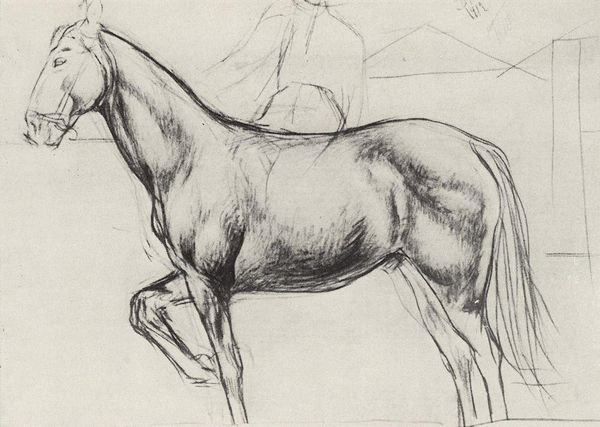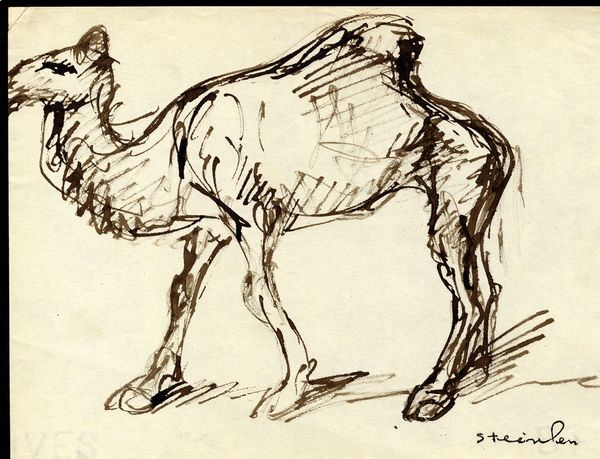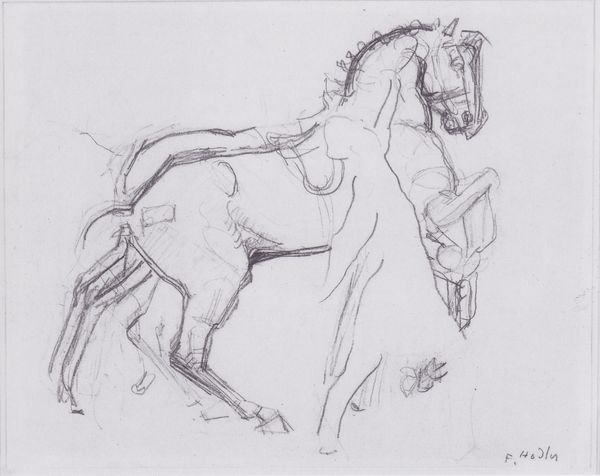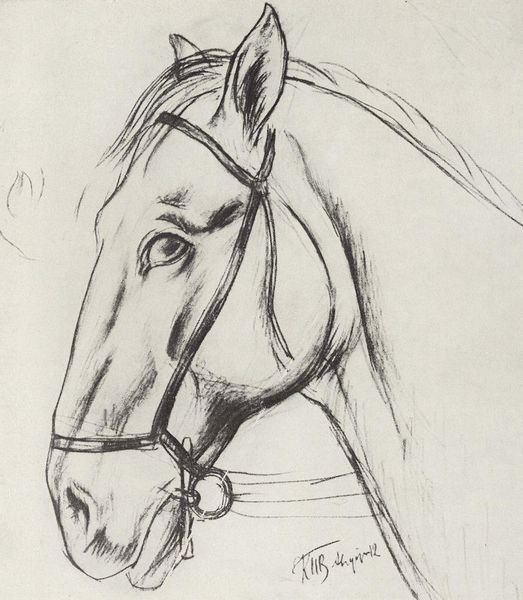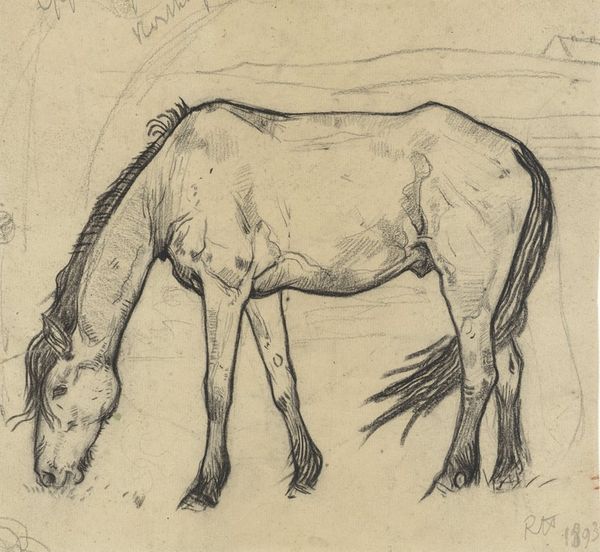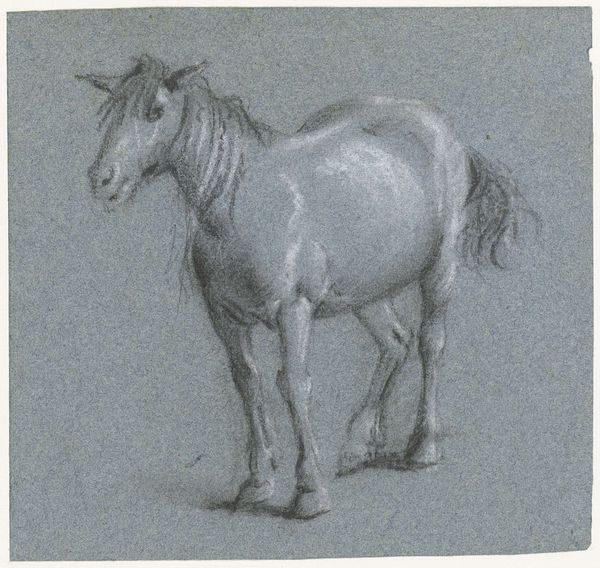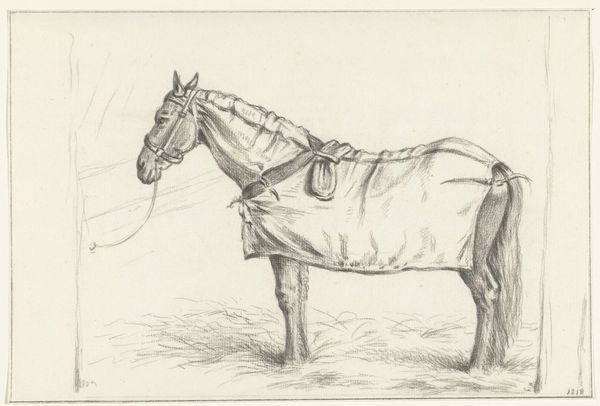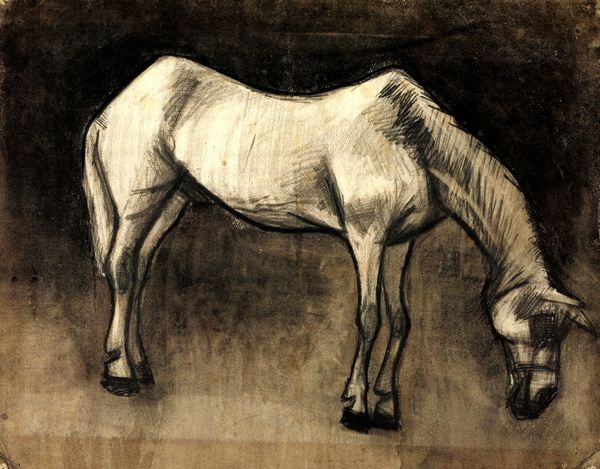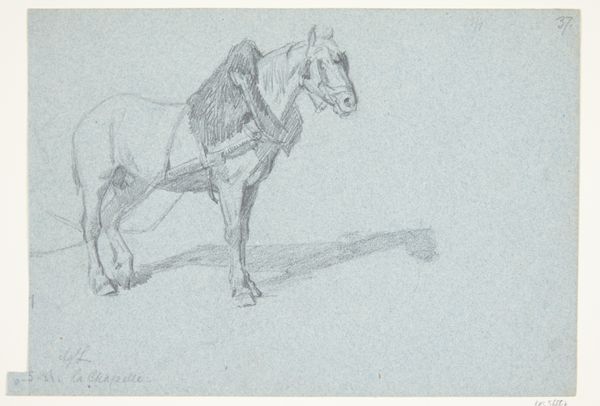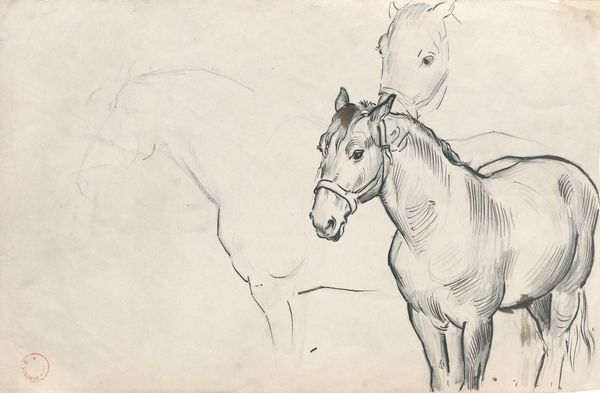
drawing, ink
#
drawing
#
landscape
#
figuration
#
ink
#
romanticism
#
line
Copyright: Public Domain: Artvee
Curator: What a captivating drawing; this is Eugène Delacroix's "Study of a Horse," rendered in ink around the 1820s or 30s. What's your take on it? Editor: It feels like controlled chaos, almost violently rendered with its abrupt lines. It's interesting how little of the horse is actually there, but its power and form remain! Curator: Delacroix was a master of Romanticism, capturing emotion and movement. Consider the horse, a symbol deeply embedded in history and mythology, linked to power, freedom, and even untamed passion. Editor: Yes, and even unfinished, it feels potent, regal. There's a directness in its form which defies the standards upheld in, say, the more neoclassical circles popular in European art academies. Was Delacroix setting out to oppose this ideal of “finish”? Curator: Exactly. Romanticism emerged in part as a reaction against the Enlightenment's emphasis on reason, as well as the established art practices; what we know of this artistic milieu would indicate this spirit, this deliberate rebellion. Delacroix employed loose, expressive lines—his interest lying in the gesture and the essence rather than academic accuracy. Horses, especially, played crucial roles during his lifetime as they grew to symbolize a new era. Editor: And look at the shadow; just one quick line grounding this otherwise ephemeral rendering of the horse in real space. Without it, it might simply disappear, the subject rendered weightless by an overly interpretive approach. It lends the image presence; this is important, grounded work. Curator: It really does; that deliberate choice brings to mind other symbols within equine culture like status and warfare, a clear understanding on the artist's part regarding not just the art, but how people engage and receive information from the art. A brilliant study in its own right and insight. Editor: Agreed. The cultural undercurrents resonate clearly even through such a seemingly simple sketch. Thanks to Delacroix, this animal may prance for ages still to come.
Comments
No comments
Be the first to comment and join the conversation on the ultimate creative platform.

